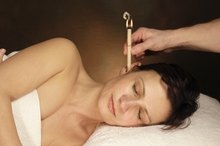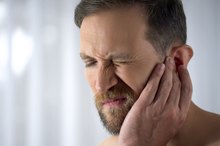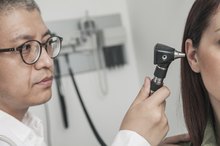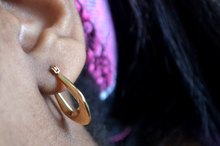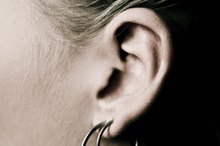Asian Ear Wax Removal
Ear cleaning is not just a hygiene issue in Asian countries. It is an important part of Asian history and culture, and is a social procedure often done by friends or loved ones. Because the nerves in your ears correspond to the internal organs of the body, earwax removal with Asian tools can be a soothing and stimulating experience.
If you are experiencing serious medical symptoms, seek emergency treatment immediately.
Asian Ear Wax
Not all earwax is the same. While people of African or European descent have earwax that is moist and gooey, roughly 90 percent of Asians have dry flaky earwax 1. Researchers have found that Asians have a gene mutation that prevents the buildup of cerumen in the ear. Cerumen is the substance that makes earwax wet. However, the reasons why this mutation occurred are still being studies.
- Not all earwax is the same.
- While people of African or European descent have earwax that is moist and gooey, roughly 90 percent of Asians have dry flaky earwax 1.
Ears and Senses
How to Use Ear Cones
Learn More
The ear has many traditional acupuncture points along with nerve endings that connect with internal organs. Allowing a trusted person to clean your ears can be relaxing, intimate and even quite pleasing.
Tools
While many tools can be used, the traditional Asian ear cleaning tool is the ear pick. This is a small spoon-shaped instrument used to remove ear wax. When cleaning someone else's ears, it is important to listen to their response to make it as comfortable as possible.
Other tools include an ear hair shaver to trim long hair, according to MyEarPick.com. A ball head is a small massage unit used over the entire surface of the ear. In Vietnam, this tool is also used to massage eyelids.
For ears that haven't been cleaned in a long time, an excavator can be used to remove large masses of wax, hair and dirt. A feather blade can be used to remove patches of itchy, flaky or dead skin that may have accumulated.
A down puff is used as the final touch. The puff is rotated and sweeps the ear's surfaces clean.
- While many tools can be used, the traditional Asian ear cleaning tool is the ear pick.
- This is a small spoon-shaped instrument used to remove ear wax.
The Process
Ear Pain After Wax Removal
Learn More
Many Asian cities feature ear cleaning salons, and some even have sidewalk stands offering the procedure. However, the traditional treatment is performed in the home by a parent, spouse or friend.
The person whose ears are being cleaned relaxes with their head in their partner's lap. The cleaner then uses the various tools to clean and stimulate their partner's ears. Some people find this treatment pleasurable and somewhat erotic. It is often done by lovers as a sign of intimacy and vulnerability.
- Many Asian cities feature ear cleaning salons, and some even have sidewalk stands offering the procedure.
- However, the traditional treatment is performed in the home by a parent, spouse or friend.
Warning
The ear pick is an effective tool for removing the dry, flaky wax common to East Asians. It is not as effective on the tougher wet wax common to those of European and African descent. People with gooey cerumen-laden wax should use irrigation or have a doctor remove the wax.
Under no circumstances should you use a Q-tip to clean your ears.
- The ear pick is an effective tool for removing the dry, flaky wax common to East Asians.
- People with gooey cerumen-laden wax should use irrigation or have a doctor remove the wax.
Related Articles
References
- Live Science: Is Your Earwax Wet or Dry?
- Schwartz S, Magit A, Rosenfeld R, et al. Clinical Practice Guideline (Update): Earwax (Cerumen Impaction). Otolaryngol Head Neck Surg. 2017;156(1_suppl):S1-S29. doi:10.1177/0194599816671491
- Cleveland Clinic. Swimmer's Ear (Otitis Externa). Updated January 29, 2019.
- Prokop-Prigge K, Mansfield C, Parker M, et al. Ethnic/Racial and Genetic Influences on Cerumen Odorant Profiles. J Chem Ecol. 2014;41(1):67-74. doi:10.1007/s10886-014-0533-y
- American Academy of Otolaryngology-Head and Neck Surgery. Clinical Practice Guideline: Cerumen Impaction. 2017.
- Zackaria M, Aymat A. Ear candling: a case report. Eur J Gen Pract. 2009;15(3):168-169. doi:10.3109/13814780903260756
- Burton MJ Ear drops for the removal of ear wax. Cochrane Database Syst Rev - 01-JAN-2009(1): CD004326
- Flint: Cummings Otolaryngology: Head & Neck Surgery, 5th ed.
- Lum CL. Antibacterial and antifungal properties of human cerumen. J Laryngol Otol - 01-APR-2009; 123(4): 375-8.
- Roland, Peter S. Clinical practice guideline: Cerumen impaction Original. Otolaryngology - Head and Neck Surgery, Volume 139, Issue 3, Supplement 2, September 2008, Pages S1-S21.
- Tomita, Hiroaki. Mapping of the wet/dry earwax locus to the pericentromeric region of chromosome 16. The Lancet. Volume 359, Issue 9322, 8 June 2002, Pages 2000-2002.
Writer Bio
Susan Landis-Steward has been a print journalist and editor since 1985, writing for "The Reflector," "The Multnomah Village Post," "The Evergreen Messenger" and "The Oregonian." She has won numerous awards for her reporting and has been published in top academic journals. Landis-Steward has a Master of Science in writing from Portland State University.
